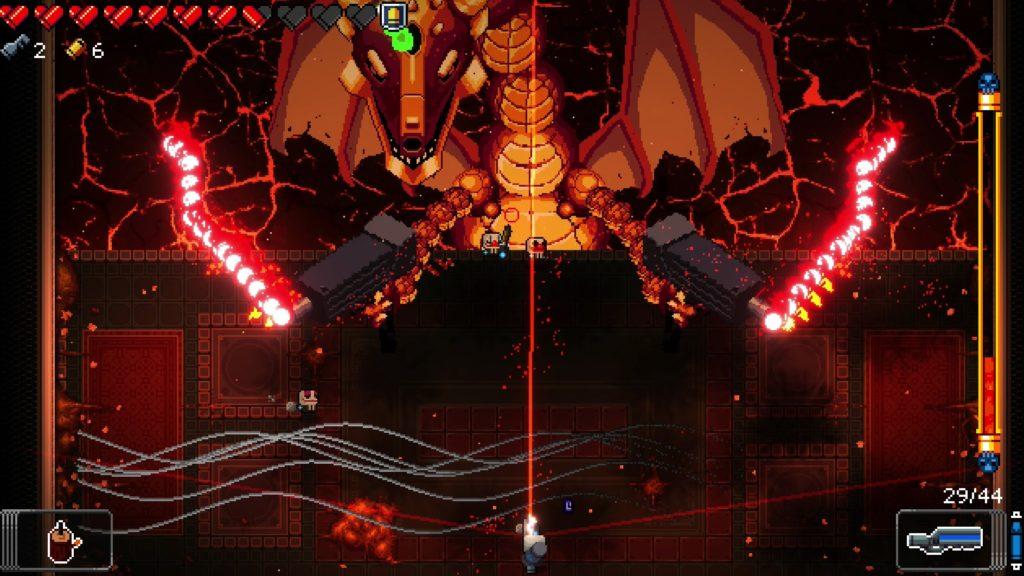I’m typically not so fond of thriller movies, so it was a surprise for me to find myself genuinely enjoying a murder mystery escape room game. I decided to play Cube Escape: Paradox by Rusty Lake on my Mac and although I was a bit confused at first, it was very fun! The game is free on steam and playable on other platforms like the PC, Android, and iOS. If I wasn’t part of the target audience before, I definitely am now. Anyone who enjoys escape room games, surreal psychological thrillers, narrative puzzles, and murder mystery will definitely love stepping into the role of detective Dale Vandermeer in this game.
In Cube Escape: Paradox, players act as the detective Dale Vandermeer as he slowly discovers the mystery of why he’s trapped in a room where time loops, object shift, and where fragments of his memory are tucked away in some bizarre puzzle. Beyond the blend of horror and symbolism within the game, the game uses symbolic puzzle mechanics to immerse the players to reconstruct the narrative through interaction, not exposition. In this critical analysis, I’ll explore how Rusty Lake weaves narrative into the mystery through its mechanics and how architecture of the setting guides the story’s progression.
Interactive Symbolism and Narrative Logic
Cube Escape: Paradox fuses narrative with gameplay by embedding story within its puzzles, using the evolving room as a metaphor for the detective’s fractured psyche. The game avoids common design pitfalls like first-order optimal strategies. Instead, it communicates its storyline through the Mechanics of limiting player agency to just clicking and swiping, a minimalist mechanic that paradoxically increases cognitive load. Without a hint system or adaptive difficulty, players are forced to interpret meaning through experimentation. This is significant in game design because this minimalist control and the absence of tutorials or guiding features aligns with the surreal psychological tone of the game and drives tension. Unlike many puzzle games, Cube Escape: Paradox offers no first-optimal strategies or even entry-level “food” mechanics to ease new players into the game.

You get a brief synopsis of the main character “you” coming into consciousness, missing some key fragments about “her” followed by a simple instruction: “Use arrows to move around.” And that’s about it.
From a design perspective, there’s no low-skill, high-reward path or “spam-this-to-win” mechanic. The mechanics avoids design-breaking simplicity so they are intentionally ambiguous requiring players to interpret meaning, much like solving a real mystery. This creates a “narrative-through-play” mechanic rather than just having information splayed out and handed to us. These puzzles are not just gameplay tasks, they’re deeply symbolic. For example, solving a puzzle unlocks a memory fragment or surreal flashback that advances the story and these item interactions reflect these psychological themes. Solving/reassembling a photo doesn’t just solve a puzzle, it mirrors the detective’s fractured memory coming back together.

We were briefly shown “the woman” during our awakening, and later, we reassemble a photo to finally understand what she looks like.
As the game demands active thinking, pattern recognition, and experimentation, newcomers are at risk of alienation due to a lack of accessible entry points. There are no contextual hints or adaptive systems, making the game feel inaccessible at times.
Although there are no systemic break points, there is a possibility of soft locks.

For example, in the puzzle above, I thought the bottom two cubes were already in their correct positions and didn’t realize I needed to check what symbols to match them under with, leaving me indefinitely stuck. I perceive this to a be a systemic failure, where the game’s affordances aren’t clearly communicated. Additionally, the absence of a fail state and clear indication that the player is on the right track or not can lead to frustration and false assumptions about what’s broken in the game, even if it is an intentional move to mirror the detective’s own confusion. These constraints heighten focus, reinforcing the formal element of boundaries and aligning with the aesthetics of discovery and narrative, as taught by the MDA framework.
When Setting Speaks
In Cube Escape: Paradox, the setting being a single room becomes a storytelling device. Furniture rearranges itself, papers bleed, and objects transform. These environmental shifts reflect psychological changes in the protagonist and guide narrative progression. Within this limited spatial constraint, focus is heightened. There are only so many objects to spam click so it forces players to look closely, reinforcing themes of psychological entrapment. In a sense, the room acts as a “memory palace” where progress in the detective’s psyche and his mental shifts are reflected through environmental changes.

At one point, you literally go inside the detective’s mind and “rearrange” symbolic memories. This puzzle required the player to combine symbolic objects without instructions which in turn reinforced the theme of memory reconstruction.

There was another point in the story where I was lost on what to do with the cigar and coat. I didn’t think to interact with the mirror because I assumed it was decorative, as mirrors are often used for beautification purposes. It wasn’t until I saw a hint in a playthrough that I realized you had to wear the coat and hold the cigar. These subtle cues often rely on player intuition, which isn’t always reliable.
Ethics & Accessibility
One of my biggest concerns in Cube Escape: Paradox lies in its accessibility. Precision clicking on small objects creates barriers, especially to players with motor impairments. Rusty Lake could improve accessibility by implementing scalable UI elements, alternative input modes (like keyboard navigation), and captioning for sound cues.

For example, tapping on these black dots in one puzzle was difficult because my trackpad was broken. Additionally, I wouldn’t have known to tap on the black dots without the suspenseful audio cues that played with each tap.
All in all, Cube Escape: Paradox demonstrates how puzzles can become narrative tools and how constrained architecture can magnify storytelling. The game is a wonderful example of how game designers can leverage spatial storytelling and create meaning with interaction within the narrative and within the environment.



